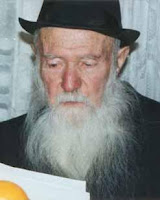 |
| The Jordan Valley Photo: Tango7174 |
Here in Israel we’ve just experienced five mild but noticeable earthquakes in six days. People are wondering whether there’s a big one on the way. We have a lot of earthquakes here. It’s not at all surprising. We live right at the edge of the Jordan Rift Valley where the African and Arabian Plates meet. These are so-called tectonic plates. They are huge slabs of the Earth’s crust that float on the surface of the molten rock below. Very, very slowly they move with respect to each other. At these junctions, the movement of the plates gives rise to volcanoes and earthquakes. The Golan Heights were created by volcanic activity. Earthquakes have occurred along and around the Jordan Valley throughout recorded history.
 |
| Mt of Olives Earthquake Damage 1927 Photo: Matson Collection |
The Great Earthquake of 749
 |
| Fallen Columns at Sussita Photo: Akos Nagy |
Major earthquakes were recorded during every era in the history of the Holy Land but the most famous of all was in the shemitta year 749. Whole cities were laid waste. In Jerusalem the al-Aqsa Mosque and four Muslim palaces around the south-western corner of the Temple Mount were destroyed. Take a trip to Beit Shean at the junction of the Jordan and Jezreel Valleys or to Sussita (Hippos) on the Golan Heights and you will see the results of this devastating earthquake. Buildings and columns lie where they fell. If you look carefully you will see that in Beit Shean the columns fell pointing north and in Sussita they fell pointing south. Why should this be? It is visible evidence that the Arabian plate on which Sussita and the Golan Heights sit is moving north with respect to the African plate which includes Beit Shean and the Land of Israel.
Timna and Feinan – Two Halves of a Crater 100 km Apart
Way down south in the Arava Valley, about 26 km north of Eilat, at Timna are the northernmost deposits of copper to be found in Israel. There are ancient copper mines here. Timna sits in the western half of a machtesh – a crater caused by erosion. To find the eastern half of the crater and the copper deposits it contains you must travel 100 km north to Feinan on the Jordanian side of the Arava. This is biblical Punon where the Children of Israel stopped on their way from Egypt. Some 30 million years ago movement between the tectonic plates in the Jordan Rift Valley separated the two halves of the crater.
King Solomon’s Mines?
+Chmee2.jpg) |
| King Solomon's Pillars Timna Photo: Chmee2 |
Already 6,000 years ago prehistoric man began to extract the copper deposits that could be found at Timna and to produce pure copper by smelting the ore at high temperatures. At first copper deposits above the ground were exploited. Over time the miners began to dig open pits then shallow “burrows” and eventually deeper mine shafts to reach the valuable metal ore. For a time it was thought that these were the legendary King Solomon’s Mines. Three large sandstone columns formed by erosion became known as King Solomon’s Pillars.
The first archaeological exploration of the copper mines at Timna began in 1959. The archaeologist Beno Rothenberg discovered an Egyptian temple to the goddess Hathor. Hathor is the goddess of fertility and also the goddess of mining. This, together with a huge rock painting showing Pharaoh Rameses III paying homage to Hathor seemed to confirm his theory that the major mining enterprise here was Egyptian and dated to the 12th and 13th centuries BCE. Later, after the Egyptians left Timna, Midianites took over the mining and altered the temple to fit with their rituals and beliefs.
The recent carbon dating evidence gives a strong indication that the mines are not Egyptian but from the Iron Age period. Ben-Yosef believes that the mines were operated by the Edomites a people that lived along the Jordan Valley. They abandoned the mines in the 10th century BCE perhaps because of an Egyptian invasion or perhaps due to competition from copper produced in Cyprus. Are these King Solomon’s Mines? We can’t say that. But who knows – they may have supplied his building projects with precious copper.
Beit Shean and Timna Park are fascinating and extensive sites well worth visiting. Follow the links for more information.
Sussita isn’t really accessible for unaccompanied tourists yet but here’s a link to the Hippos / Sussita excavation project.















+Photo+Lior+Golgher.jpg)















